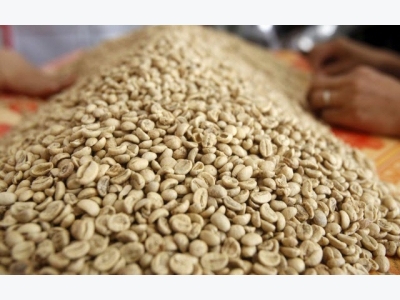Asia Coffee: Vietnam output seen strong on good weather, Indonesia premiums stay

Output of good quality coffee beans in Vietnam, the world's No. 2 producer, is expected to be strong due to favourable weather conditions, while depleted stocks in rival Indonesia have kept premiums there high
Women sort coffee beans at a coffee factory in Hanoi, Vietnam September 29, 2015. Photo: Reuters
Output of good quality coffee beans in Vietnam, the world's No. 2 producer, is expected to be strong due to favourable weather conditions, while depleted stocks in rival Indonesia have kept premiums there high, traders said on Thursday.
Typhoon Damrey, Vietnam's deadliest storm so far this year, flooded some areas last week in the country's coffee belt region of Central Highlands, but only had a minimal impact on the 2017/2018 crop, traders and farmers said.
Most traders expect good quality beans from the new Vietnamese coffee crop after the rains, and the current sunny weather should allow farmers to harvest and dry the beans.
Traders said farmers in Daklak were offering coffee beans at 38,800-39,400 dong ($1.71-$1.73) per kg, compared with 39,000-39,500 dong a week earlier.
Vietnam's 5-percent black and broken grade 2 robusta were traded at a discount of $30-$50 per tonne to the ICE January 2018 futures contract , traders said, adding some deals were sealed based on the March contract instead.
Demand has started to pick up as buyers sought to secure contracts amid rising supply at the beginning of the harvest season.
In Indonesia, the grade 4 defect 80 robusta beans traded at a premium of $60-$70 a tonne to the January contract, rising from a $50 premium a week ago amid low stocks, a trader said. ($1 = 22,709 dong)
Related news
 Biologicals: Another important tool for farmers
Biologicals: Another important tool for farmers Biological pesticides and fertilizers are generating quite the buzz among farmers and the ag chem companies that serve them.
 New seed tech gets closer to market
New seed tech gets closer to market Balance GT offers another tool for managing resistant weeds, we talk to a new licensee - Stine Seed
 Growing crops in greenhouses to promote sustainability
Growing crops in greenhouses to promote sustainability Agricultural plastic waste such as cover films, pipes, trellis twines and more may constitute an environmental hazard when not properly treated after usage.